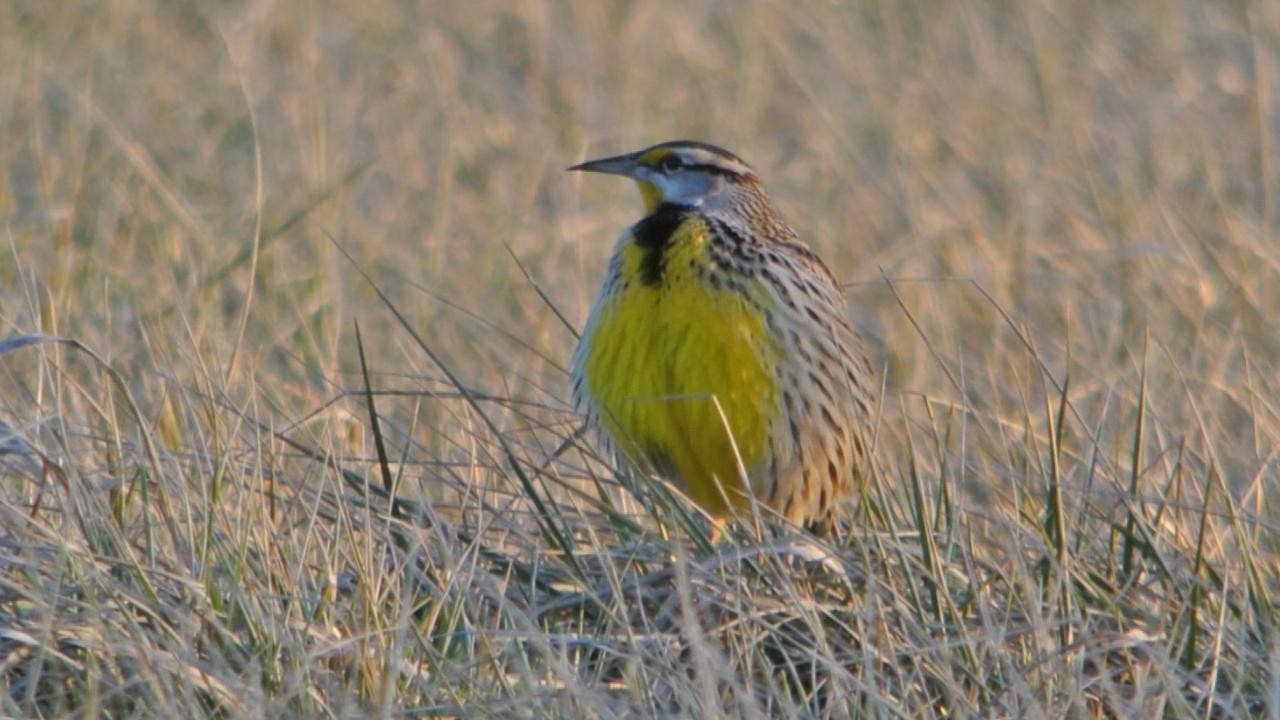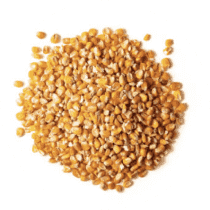Eastern Meadowlark
A species of North American Meadowlarks, Also known as Medlark Scientific name : Sturnella magna Genus : North American Meadowlarks
Eastern Meadowlark, A species of North American Meadowlarks
Also known as:
Medlark
Botanical name: Sturnella magna
Genus: North American Meadowlarks
Content
Description People often ask General Info
 Photo By Andy Reago & Chrissy McClarren , used under CC-BY-2.0 /Cropped and compressed from original
Photo By Andy Reago & Chrissy McClarren , used under CC-BY-2.0 /Cropped and compressed from original Description
The adult eastern meadowlark measures from 19 to 28 cm (7.5 to 11.0 in) in length and spans 35–40 cm (14–16 in) across the wings. Body mass ranges from 76 to 150 g (2.7 to 5.3 oz). The extended wing bone measures 8.9–12.9 cm (3.5–5.1 in), the tail measures 5.3–8.6 cm (2.1–3.4 in), the culmen measures 2.8–3.7 cm (1.1–1.5 in) and the tarsus measures 3.6–4.7 cm (1.4–1.9 in). Females are smaller in all physical dimensions. Adults have yellow underparts with a black "V" on the breast and white flanks with black streaks. The upperparts are mainly brown with black streaks. They have a long pointed bill; the head is striped with light brown and black. The song of this bird is of pure, melancholy whistles, and thus simpler than the jumbled and flutey song of the western meadowlark; their ranges overlap across central North America. In the field, the song is often the easiest way to tell the two species apart, though plumage differences do exist, like tail pattern and malar coloration. The pale Lilian's meadowlark of northern Mexico and the southwestern US is sometimes split off as a separate species. 
Size
23-28 cm (9-11 in)
Colors
Brown
Black
Yellow
Gray
White
Life Expectancy
5 years
Nest Placement
Ground
Clutch Size
2 - 7 eggs
Incubation Period
1 - 2 broods
Number of Broods
13 - 16 days
Nestling Period
10 - 12 days
Feeding Habits
Eastern Meadowlark primarily consume insects such as crickets, grasshoppers, caterpillars, and grubs. In winter, their diet includes weed seeds, spilled corn, and wild fruits, but not sprouting grain. They forage by walking, probing the ground with their bill, and employing a bill-opening technique to unearth prey.
Habitat
Eastern Meadowlark thrive in open and expansive grasslands, including native prairies, pastures, and meadows, often selecting territories around 6 acres for breeding. They favor wetter, lowland areas, particularly where their range overlaps with their western counterparts. These birds adapt to various grassy landscapes, from hayfields and agricultural lands to airstrips, provided they offer adequate space and vegetation.
Nest Behavior
The female eastern Meadowlark solely constructs the nest over 4–8 days. Egg laying follows nest building, and she incubates the eggs while both parents feed the young post-hatching.
Nest Characteristics
Eastern Meadowlark nests are ground-based, often in a depression and shrouded by dense grass. They measure 6–9 inches wide and 2–3 inches deep, crafted from dead grasses, plant stems, and bark, occasionally featuring roofs and tunnel entrances.
Dite type
Insectivorous
People often ask
General Info
Feeding Habits
Bird food type

Hulled Sunflower Seeds

Cracked Corn
Bird Feeder Type

Ground
Sounds
Call
Recording location: Mexico
Song
Recording location: United States
Behavior
Eastern Meadowlark exhibit a blend of conspicuous and secretive behaviors depending on the season. They forage on the ground in grasslands, seeking insects with a walk-and-stalk method. Males are notably vocal, using their heartening calls to establish territory and attract females during breeding season, and perform eye-catching displays, including jump flights and bill tilting to showcase their vivid yellow breast. Territorial fidelity is strong, with males admitting multiple mates within their region, and both sexes often returning annually to familiar territories. Conversely, outside the breeding season, eastern Meadowlark are reclusive, skillfully blending with tall grasses and evading human presence with stuttering, whirring flight, caution warranted to avoid nest abandonment.
Species Status
Eastern meadowlarks are species at risk in Nova Scotia and the subject of agricultural conservation program seeking to reduce mortality through modified practices. Allowing marginal areas of fields on farms to seed with grass can provide nesting habitat for meadowlarks and all grassland birds. Delaying hay harvest can also improve survival, giving young meadowlarks a chance of fledging 

 Photo By Andy Reago & Chrissy McClarren , used under CC-BY-2.0 /Cropped and compressed from original
Photo By Andy Reago & Chrissy McClarren , used under CC-BY-2.0 /Cropped and compressed from original